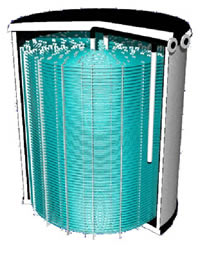
by Shane Henson — March 11, 2013—CALMAC, a designer and manufacturer of thermal energy storage, was recently awarded a contract to install its thermal energy storage tanks at a 22-story, 270,000-square-foot high-rise commercial building located in Philadelphia.
CALMAC provided its IceBank tanks and two 300-ton chillers to remedy problems facing the 84-year-old building’s management, including a failing heating, air conditioning and ventilation (HVAC) system and declining tenant satisfaction because of it.
The thermal energy storage system allows ice to be created at night, when power is less expensive and generated more efficiently. It is then used the next day to cool the building during peak demand hours, which has significantly reduced operating costs. The thermal energy storage tanks were also paired with Viridity Energy’s VP Power software to provide additional flexibility. With this upgrade to the building controls, CALMAC’s tanks are able to function as a part of a real-time demand response system that utilizes data from the utility company.
“Viridity Energy can forecast where prices due to congestion will be for the next day on an hour-by hour basis and provide a schedule to the building operator through the building automation system, which the ice system is tied into to make ice or burn ice,” said H.G. Chissell, vice president, NE region and strategic accounts at Viridity Energy. “When they are using ice they are not using their chillers, and their load drops. We can then make sure that the grid operator knows that this load is dropping during these hours and they don’t have to go to a power plant. The grid operator diverts the income or the money to the building.”
The upgrades, installed at the same cost of the existing outdated system, have helped turn the building into a “virtual power plant” and prepared it for the smart grid without using any extra building space, says CALMAC. Through the new tanks, the building is expected to save $40,000 in energy costs per month during the warmer months and to generate an additional $10,000 of revenue per year through utility incentive programs.





